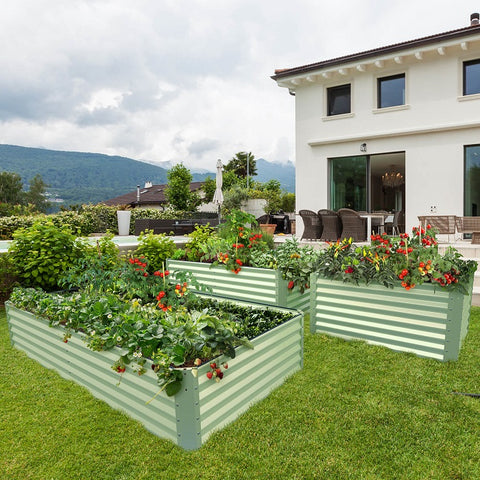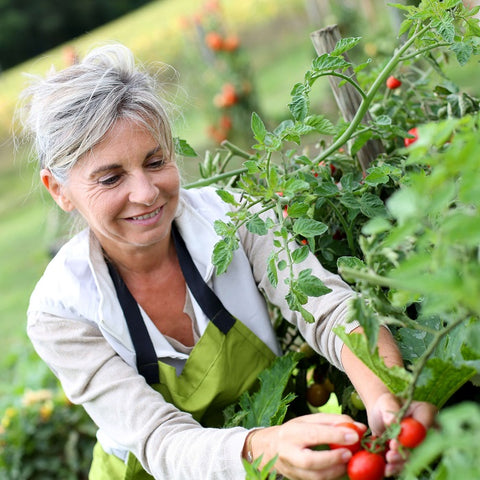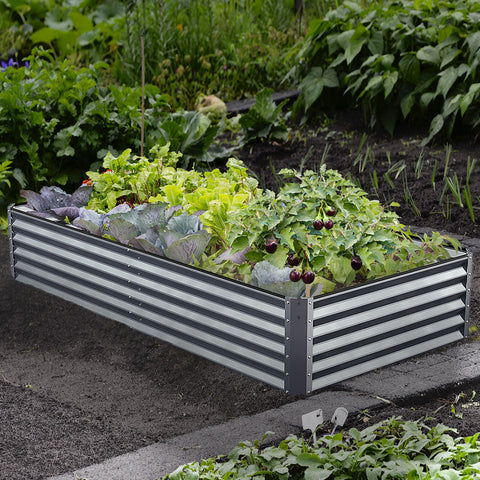In our ever-changing world, the significance of pollinators in maintaining ecosystems and supporting agriculture cannot be overstated. Pollinators, including bees, butterflies, and other insects, are essential for the reproduction of flowering plants, which in turn produce fruits, vegetables, and seeds. However, these crucial creatures face challenges due to habitat loss, pesticide use, and climate change. One effective way to support pollinators and create a thriving ecosystem is by establishing pollinator-friendly gardens with raised beds. In this comprehensive guide, we will explore the importance of pollinators, delve into the benefits of raised beds, and provide a step-by-step approach to creating your pollinator haven.

The Vital Role of Pollinators
Pollinators play a pivotal role in maintaining biodiversity and sustaining ecosystems. Here's why they are so crucial:
- Ecosystem Health: Pollinators facilitate the reproduction of numerous plant species, ensuring ecosystem health and balance.
- Agricultural Importance: Many crops, from apples to zucchinis, rely on pollinators for fertilization. Without them, food production would be severely impacted.
- Biodiversity Support: Pollinators aid in the reproduction of plants that provide habitat and food for other wildlife species, contributing to overall biodiversity.
- Economic Impact: Pollination services contribute billions of dollars to the global economy through increased crop yields.
Creating a Pollinator-Friendly Garden with Raised Beds
Raised beds offer several advantages for creating a pollinator-friendly garden. They elevate your gardening efforts to new heights, quite literally. Here's how to design and establish a raised bed pollinator garden:

Step 1: Choose the Right Location
Selecting an appropriate location for your raised beds is the first crucial step. Consider the following factors:
- Sunlight: Place your raised beds in a location that receives at least 6 to 8 hours of sunlight daily, as most pollinator-friendly plants thrive in full sun
- Access: Ensure easy access to your raised beds for planting, maintenance, and observation.
- Proximity to Pollinators: If possible, choose a location near natural pollinator habitats or existing flowering plants to attract pollinators more effectively.
Step 2: Designing Your Raised Beds
Designing your raised beds with pollinators in mind can create a vibrant and inviting habitat:
- Bed Size and Shape: Opt for a size and shape that allow you to comfortably reach the center of the bed without stepping on the soil. Rectangular or square beds are common choices.
- Layering and Diversity: Incorporate different layers of vegetation, such as tall flowers, shrubs, and ground covers, to attract a variety of pollinator species.
- Color and Scent: Choose a range of flower colors and fragrances to attract a diverse group of pollinators.
Step 3: Selecting Plants
Choosing the right plants for your raised beds is crucial to attracting and supporting pollinators:
- Native Plants: Prioritize native plants, as they are adapted to your local ecosystem and provide familiar food sources for local pollinators.
- Plant Diversity: Select a mix of plants with varying bloom times, ensuring a continuous supply of nectar and pollen throughout the growing season.
- Host Plants: Include host plants that cater to the life cycles of specific pollinators. For example, monarch butterflies rely on milkweed as a host plant for their caterpillars.

Step 4: Building Your Raised Beds
Building raised beds for your pollinator-friendly garden is a rewarding DIY project:
- Materials: Choose untreated wood, stone, or raised beds made from eco-friendly and safe materials. Avoid using pressure-treated wood, which may leach harmful chemicals into the soil.
- Height: Opt for a bed height of at least 17 inches, as this provides ample space for root growth and prevents soil compaction.
- Soil Mix: Fill your raised beds with a well-draining, nutrient-rich soil mix that supports plant growth. Consider blending compost, topsoil, and other organic amendments.
Step 5: Planting and Maintenance
Now that your raised beds are ready, it's time to bring your pollinator-friendly garden to life:
- Planting: Follow your garden design, considering plant spacing and arrangement. Place taller plants toward the back of the bed and shorter plants in the front.
- Mulching: Apply a layer of organic mulch around your plants to conserve moisture, suppress weeds, and regulate soil temperature.
- Watering: Water your raised beds consistently, keeping the soil evenly moist but not waterlogged. Drip irrigation can be incredibly effective.
- Maintenance: Regularly deadhead spent flowers to encourage new blooms. Monitor for pests and diseases, and address issues promptly using organic methods.
Step 6: Encouraging Beneficial Insects
Raised beds can provide an ideal habitat for beneficial insects that contribute to pollination and pest control:
- Insect Hotels: Integrate insect hotels into your garden design. These structures provide shelter for solitary bees, ladybugs, and other beneficial insects.
- Nesting Sites: Leave patches of bare ground or install small piles of twigs and leaves to offer nesting sites for ground-nesting bees.
- Avoid Chemicals: Refrain from using chemical pesticides and herbicides, as they can harm pollinators and beneficial insects.

Step 7: Observation and Learning
A pollinator-friendly raised bed garden is not only beautiful but also educational:
- Observation: Spend time observing the pollinators that visit your garden. Take note of their behaviors and interactions with different plants.
- Learning Opportunities: Share your garden with friends, family, and local schools to raise awareness about the importance of pollinators.
- Continuous Improvement: Continuously learn from your gardening experiences and make adjustments to your garden design and plant selection.
Conclusion
Creating a pollinator-friendly garden with raised beds is a fulfilling journey that benefits both your local ecosystem and your well-being. By incorporating native plants, thoughtful design, and sustainable gardening practices, you can attract a diverse array of pollinators and beneficial insects to your space. Remember, every raised bed you cultivate, every flowering plant you nurture, and every pollinator you welcome contributes to the preservation of these vital creatures and the health of our planet's ecosystems.









